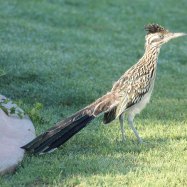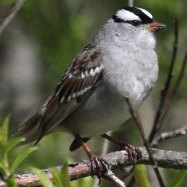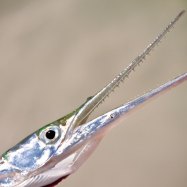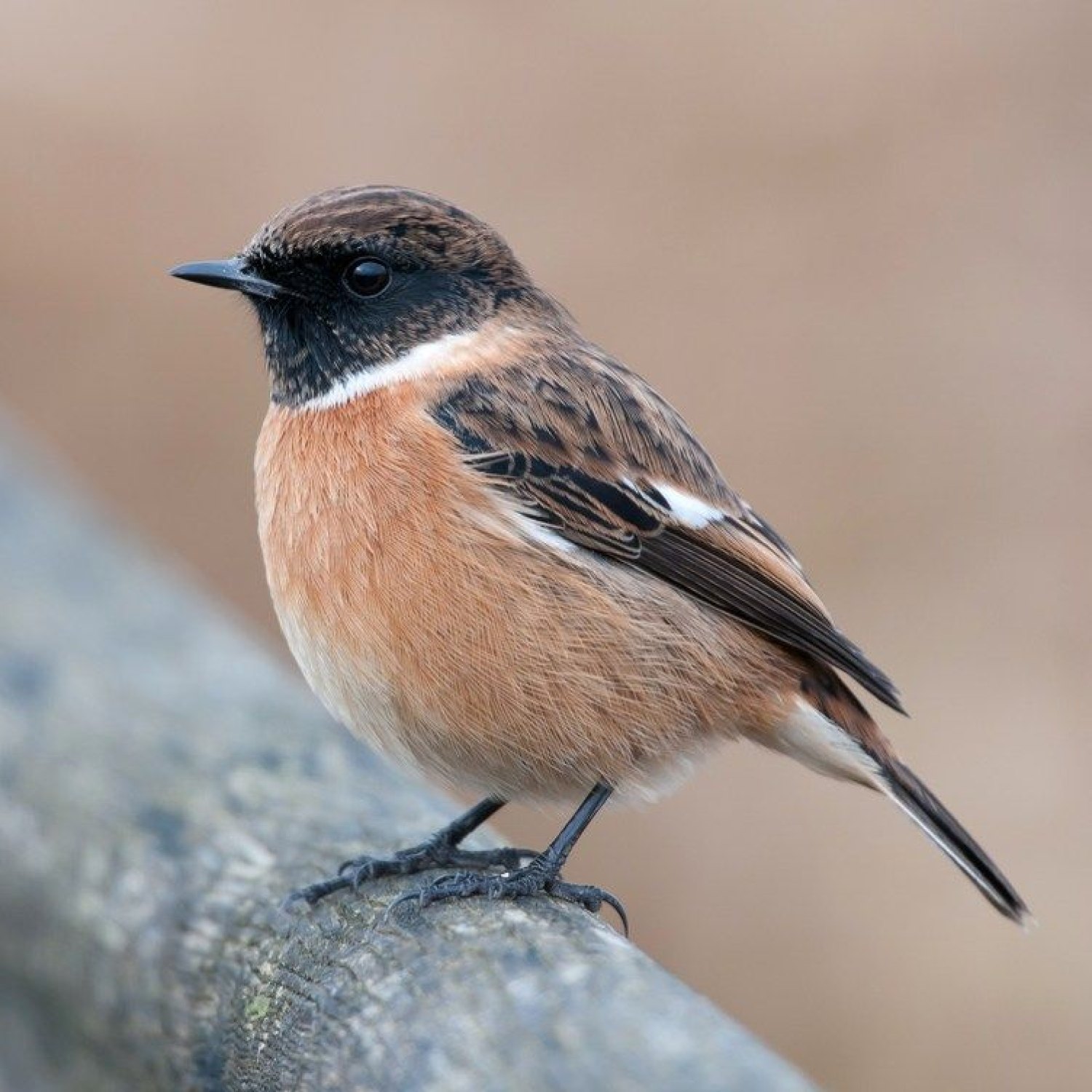
Stonechat
12-14 cm (4.7-5.5 inches)
The Stonechat is a small and compact bird found in open areas with low vegetation. With a length of 12-14 cm (4.7-5.5 inches), it belongs to the Muscicapidae family. Known for its distinctive, stone-like call, this beautiful bird is a delight to spot and observe in its natural habitat. #Stonechat #Muscicapidae #birdwatching
Animal Details Summary:
Common Name: Stonechat
Kingdom: Animalia
Habitat: Grasslands, heathlands, moorlands, scrub habitats
Beyond Boundaries: Exploring the Fascinating Stonechat
As we delve into the vast kingdom of animals, we come across a variety of unique and magnificent creatures. Among them, the Stonechat stands out as a fascinating and elusive bird. With its charming appearance and intriguing behavior, this small passerine bird has captured the attention of bird lovers and researchers alike.Scientific Classification
Before we embark on our journey to discover the Stonechat, let us first familiarize ourselves with its scientific classification Stonechat. The Stonechat belongs to the kingdom Animalia, phylum Chordata, class Aves, order Passeriformes, and family Muscicapidae. Its scientific name is Saxicola rubicola, derived from the Latin words "saxicola" meaning "rock-dweller" and "rubicola" meaning "a farmer of brambles."
Common Name and Distribution
The Stonechat is commonly known as the Stonechat, due to its preference for open areas with low vegetation such as grasslands, heathlands, moorlands, and scrub habitats. This species can be found in various countries across the world, including Europe, Asia, and Africa, making it a well-traveled bird.
Appearance and Body Shape
The Stonechat is a small, compact bird with a rounded head, a short tail, and a sturdy body, measuring 12-14 cm (4.7-5.5 inches) in length. Its striking coloration differs between males and females. Male Stonechats have a jet-black head, a vibrant orange breast, and a white collar, while females have a brown coloration with an orange-brown breast Savannah Monitor. This distinction between the sexes is known as sexual dimorphism and plays a significant role in mating behaviors.
Feeding Habits
Stonechats are insectivorous birds, which means they primarily feed on insects. They feed on a variety of insects, including grasshoppers, beetles, caterpillars, and spiders. They are also known to eat small fruits and berries, especially during the winter months when insects are scarce. Their main feeding technique is to perch on a high vantage point and scan the area for prey. Once they spot their target, they quickly swoop down to capture it, often returning to their perch to consume their meal.
Behavior and Habitat
The Stonechat is a solitary and territorial bird, preferring open areas with low vegetation for nesting and foraging. They are commonly found in areas with shrubs, brambles, and gorse. They are also known to adapt to human-made habitats such as farmlands and gardens. These birds are highly vocal, and their sharp and melodious calls can often be heard during their breeding season, between March to June.
Breeding and Mating
The breeding season of Stonechats starts in early Spring, and the male plays an essential role in attracting a mate. They do this by singing and performing an elaborate territorial display, often perching on top of a shrub while fluffing their feathers and raising their tail. Once they have successfully attracted a mate, the pair builds a cup-shaped nest, usually hidden in shrubs or low vegetation. The female lays a clutch of 4-5 eggs, which are incubated by both parents for approximately 13-14 days. Once the eggs hatch, the young Stonechats are fed by both parents until they fledge and leave the nest after 16-19 days.
Threats and Conservation
Despite its widespread distribution, the Stonechat population is under threat and has been declining in recent years. One of the significant threats to this species is loss of habitat due to human activities, such as land development and agricultural practices. They are also at risk from predators such as birds of prey and domestic cats. Efforts are being made to protect their habitats and raise awareness about their conservation. The Stonechat is listed as a species of Least Concern by the International Union for Conservation of Nature (IUCN).
The Stonechat and Humans
The Stonechat has played a significant role in human culture and history. In ancient Greece, it was believed that the bird could cure kidney stones, hence its scientific name "Saxicola." It has also been depicted in paintings and literature, with one famous example being the Stonechat featured in the 19th-century novel "Birds of Prey" by Wilbur Smith. With its striking appearance and enchanting behavior, the Stonechat has also become a popular subject for birdwatchers and photographers.
In addition to their aesthetic and cultural value, Stonechats are also beneficial to humans as they help control insect populations, which can be harmful to crops. They are also an indicator species, meaning their presence or absence can indicate the health of their environment.
Conclusion
In conclusion, the Stonechat is a remarkable and captivating bird with a unique appearance and behavior. With its widespread distribution and ability to adapt to various habitats, this species continues to intrigue and fascinate researchers and bird enthusiasts. Despite facing various threats, efforts are being made to protect and conserve this beautiful bird and its habitat for future generations to admire and appreciate.
So, the next time you find yourself in an open area with low vegetation, keep an eye out for the Stonechat, and who knows, you might just get a glimpse of this remarkable bird in action.

Stonechat
Animal Details Stonechat - Scientific Name: Saxicola rubicola
- Category: Animals S
- Scientific Name: Saxicola rubicola
- Common Name: Stonechat
- Kingdom: Animalia
- Phylum: Chordata
- Class: Aves
- Order: Passeriformes
- Family: Muscicapidae
- Habitat: Grasslands, heathlands, moorlands, scrub habitats
- Feeding Method: Insectivorous
- Geographical Distribution: Europe, Asia, Africa
- Country of Origin: Various countries in Europe, Asia, and Africa
- Location: Open areas with low vegetation
- Animal Coloration: Male: black head, orange breast, white collar. Female: brown with orange-brown breast
- Body Shape: Small, compact
- Length: 12-14 cm (4.7-5.5 inches)
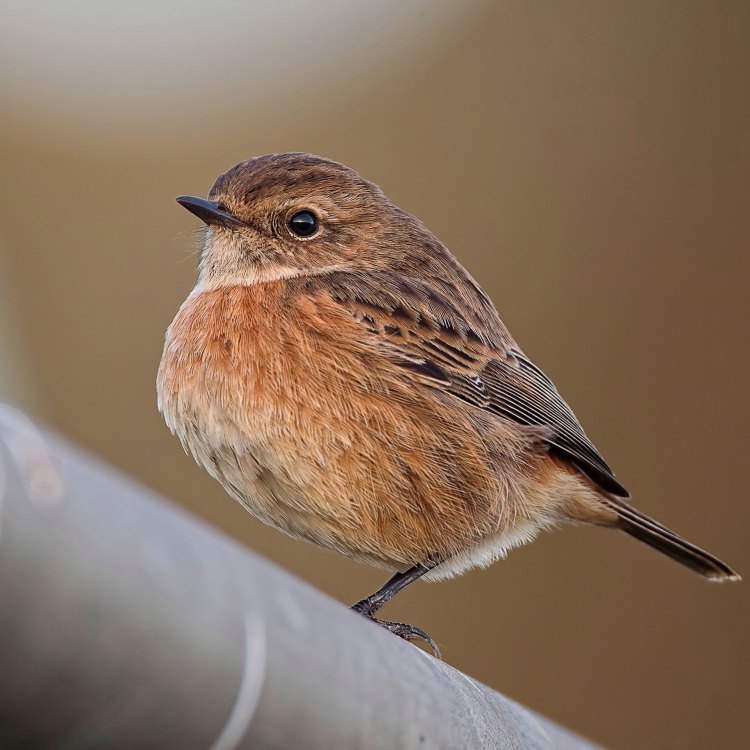
Stonechat
- Adult Size: Small
- Average Lifespan: 2-3 years
- Reproduction: Sexual
- Reproductive Behavior: Monogamous
- Sound or Call: Melodic, tuneful song
- Migration Pattern: Migratory in some populations
- Social Groups: Generally solitary, pairs in breeding season
- Behavior: Active and agile, perches on vegetation to look for prey
- Threats: Habitat loss, predators, climate change
- Conservation Status: Least Concern
- Impact on Ecosystem: Pollination of plants
- Human Use: Birdwatching, photography
- Distinctive Features: Distinct black head and white collar in males, bright orange breast in males and females
- Interesting Facts: Stonechats are known for their distinctive 'tacking' call. They are named 'Stonechat' because of their habit of perching on stones or low vegetation. Stonechats have a short lifespan compared to other bird species.
- Predator: Birds of prey, snakes, mammals
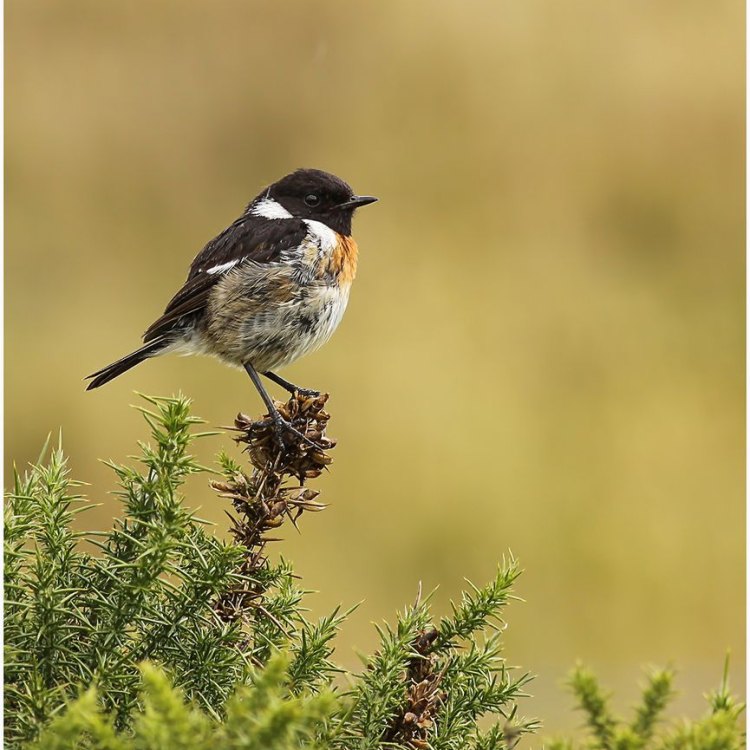
Saxicola rubicola
The Fascinating World of the Stonechat: A Small But Mighty Bird
In the world of birds, there are hundreds of species that captivate us with their beauty, songs, and behaviors. One such bird is the Stonechat (Saxicola rubicola), a small, striking bird that can be found in various parts of the world, from Europe to Asia. Despite its small size, the Stonechat is a bird that has managed to stand out with its distinctive features and intriguing behaviors. So, let's delve into the world of the Stonechat and discover what makes it such a unique and fascinating bird PeaceOfAnimals.Com.Size and Lifespan
The Stonechat belongs to the family of passerine birds, which includes perching birds such as finches, sparrows, and warblers. As an adult, the Stonechat is considered a small bird, measuring only 12-13 centimeters in length and weighing around 13-14 grams. But don't let its size fool you; this little bird is quite mighty in its own way.On average, the Stonechat has a relatively short lifespan of 2-3 years. This is significantly shorter compared to other bird species, which can live for several years. However, what the Stonechat lacks in lifespan, it makes up for in its reproductive capabilities and behaviors.
Reproduction and Behavior
Like most birds, the Stonechat reproduces through sexual means. Males and females engage in courtship displays to attract a mate. They are known to be monogamous, which means they mate with the same partner for multiple breeding seasons Siberian Husky.During the breeding season, Stonechats are generally solitary birds, but they form pairs for the purpose of breeding. These pairs are usually territorial and will defend their nesting site from other birds. Once the young have fledged, the pair will continue raising them together until they are ready to leave the nest.
Stonechats are also known for their active and agile behavior. They are constantly on the move, hopping between low vegetation and perching on top of shrubs and small trees to look for prey. This behavior not only helps them find food, but it also serves as a way to stay on the lookout for predators.
Sounds and Calls
One of the most distinctive features of the Stonechat is its melodic, tuneful song. You can often hear its musical calls as it perches on top of vegetation or makes short flights from one territory to another. But perhaps the most distinctive call of the Stonechat is its 'tacking' call, which sounds like two pebbles being tapped together.This call is used by both males and females, and it is believed to serve as a way to communicate with their mate or to warn other birds of potential predators. It is this unique call that has given the Stonechat its name, as it is often seen perched on stones or low vegetation while making this sound.
Migration and Social Groups
The Stonechat's migration pattern varies among populations. In some areas, they are migratory birds, while in others, they are resident birds. The migratory populations usually spend their breeding season in Europe or Asia and then fly south to Africa or India for the winter. On the other hand, resident populations can be found in the middle-east and parts of Asia all year round.Stonechats are generally solitary birds, but during the breeding season, they form pairs and defend a territory. Outside of breeding season, they can be seen in small groups, but they still maintain a certain distance from each other. This social behavior is thought to be a way to reduce competition for resources.
Threats and Conservation Status
As with many bird species, the Stonechat faces various threats that can significantly impact its population. One of the primary threats is habitat loss due to human activities, such as urbanization and agricultural expansion. This loss of habitat not only affects the Stonechat directly but also impacts its prey and nesting sites.Predators such as birds of prey, snakes, and mammals also pose a threat to the Stonechat. These predators can significantly reduce the bird's population, especially during the breeding season when they are busy caring for their young.
Despite these threats, the Stonechat is currently listed as Least Concern on the IUCN Red List of Threatened Species. This is due to its relatively large population and widespread distribution. However, conservation efforts are still necessary to maintain the Stonechat's population and prevent it from facing any significant decline in the future.
Impact on Ecosystem and Human Use
As with any species, the Stonechat plays a crucial role in its ecosystem. One of its most essential roles is pollination. Stonechats feed on insects and spiders, and while doing so, they also consume pollen and nectar from flowers. This makes them important pollinators for various plant species.In terms of human use, the Stonechat is often sought out by birdwatchers and photographers. Its striking colors and active behaviors make it a desirable subject for many nature enthusiasts. However, it is crucial to remember that minimal disturbance should be caused to the birds and their habitat while engaging in these activities.
Distinctive Features and Interesting Facts
What makes the Stonechat truly stand out are its distinctive features. The male Stonechat has a distinct black head and a white collar, while its breast is bright orange. Females also have the bright orange breast, but they lack the black head and white collar. These colors serve as a way to attract mates and distinguish between different individuals.Some other interesting facts about the Stonechat include its preference for nesting on the ground, making a new nest each breeding season, and its ability to survive harsh winter conditions. Its short lifespan is also unique compared to other bird species, making it even more intriguing.
Predators
As mentioned earlier, the Stonechat faces various predators in its environment. Birds of prey such as hawks and falcons pose a significant threat to the Stonechat, as they can easily catch them in flight. Snakes and mammals, such as foxes and cats, also prey on Stonechats and their young in their nests.In their defense, Stonechats use their agility and active behavior to quickly evade predators. They also have an adaptation known as 'metallic feather stripes,' which help camouflage them when perched on vegetation, making them less noticeable to predators.
A Bird Worth Protecting
The Stonechat may be a small bird, but it is certainly mighty in its own way. Its distinctive features, melodic songs, and active behavior make it an intriguing and captivating bird to observe. However, it is also a vulnerable species that needs protection from various threats. Whether it's through habitat conservation or responsible human use, we must all do our part to ensure that the Stonechat and other bird species continue to thrive in their natural habitats.
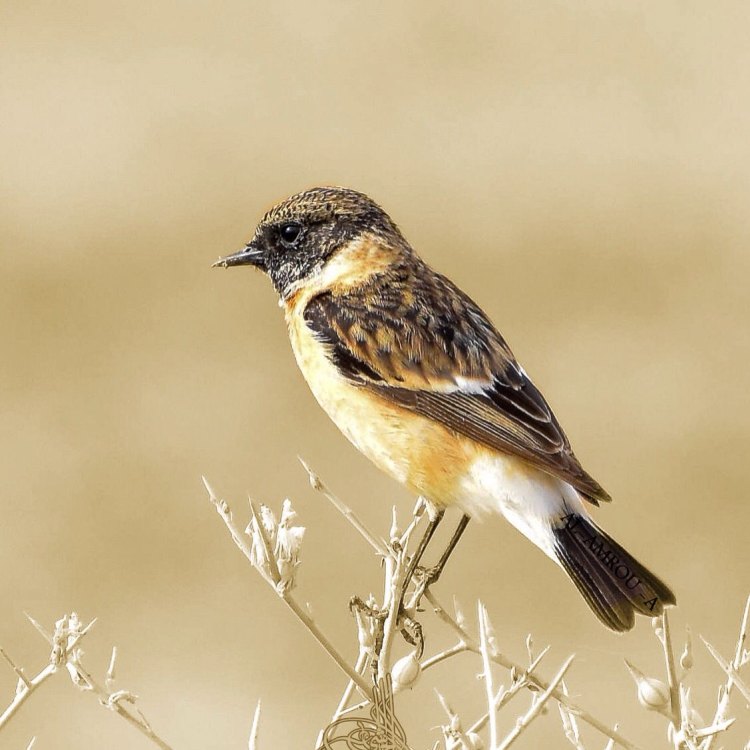
Beyond Boundaries: Exploring the Fascinating Stonechat
Disclaimer: The content provided is for informational purposes only. We cannot guarantee the accuracy of the information on this page 100%. All information provided here may change without prior notice.

